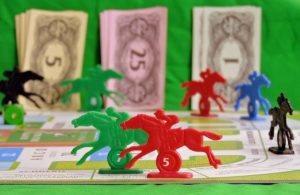How fast can racehorses run?
The American Quarter Horse, a short, stocky breed used to ‘cut’ cattle from herds, is renowned for its speed over short distances, hence its name. Uncorroborated reports suggest that such horses are capable of reaching speeds approaching 55 miles per hour over two furlongs, or a quarter of a mile. However, the fastest racehorse over that distance, as recognised by Guinness World Records, was a thoroughbred, Winning Brew, trained by Francis Vitale. In May, 2008, the two-year-old filly covered the quarter of a mile at Penn National Racecourse in Grantville, Pennsylvania in 20.57 seconds, clocking an average speed pf 43.97 miles per hour.
Of course, in Britain, Ireland and other jurisdictions, the official minimum distance for any horse race, on an enclosed racecourse, is five furlongs. Again, as recognised by Guinness World Records, the fastest horse over this distance was a thoroughbred, although this time a four-year-old, Stone Of Folca, trained by John Best. In June, 2012, Stone Of Folca belied odds of 50/1 when beating 19 rivals to win the Investec Specialist Bank ‘Dash’ Handicap at Epsom Racecourse in Surrey in a time of 53.69 seconds, at an average speed of 41.67 miles per hour.
 Desert Orchid was an immensely popular grey – in fact, towards the end of his career, almost white – horse, who won 34 of his 70 starts over hurdles and fences and remains the sixth highest-rated steeplechaser in the history of Timeform. He was trained, throughout his career, by David Elsworth, who first took out a training licence in his own right in 1978. At the peak of his powers, Elsworth had 143 horses in his yard at Whitsbury Manor Stables, near Fordingbridge, Hampshire.
Desert Orchid was an immensely popular grey – in fact, towards the end of his career, almost white – horse, who won 34 of his 70 starts over hurdles and fences and remains the sixth highest-rated steeplechaser in the history of Timeform. He was trained, throughout his career, by David Elsworth, who first took out a training licence in his own right in 1978. At the peak of his powers, Elsworth had 143 horses in his yard at Whitsbury Manor Stables, near Fordingbridge, Hampshire.